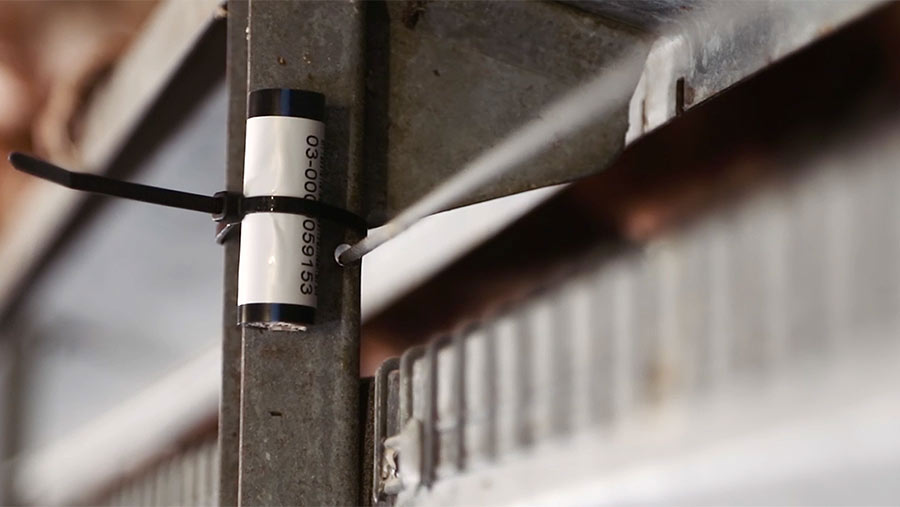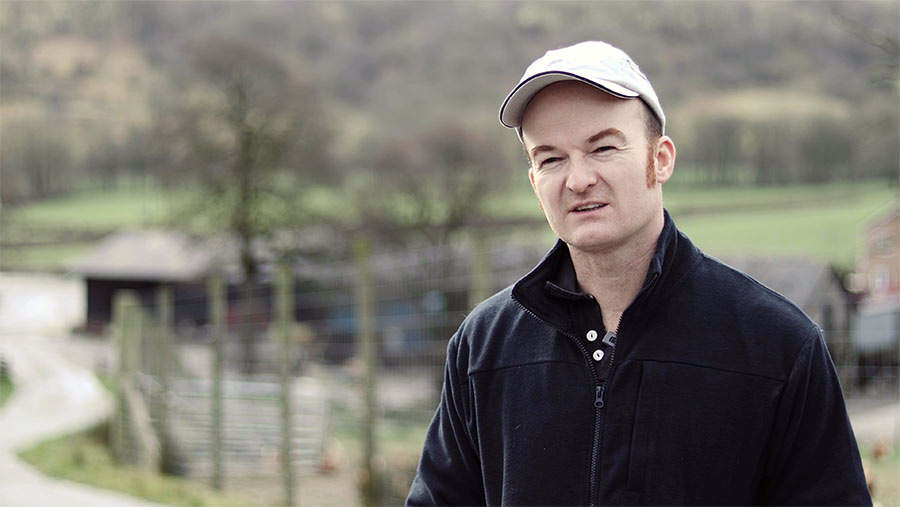How latest red mite treatments perform in poultry flocks
 A red mite trap
A red mite trap Red mite is a pervasive pest present on almost all commercial poultry farms with varying degrees of severity.
Mites can drink up to 5% of a bird’s blood every night, and mild infestations can quickly get out of hand if not kept in check.
Large populations of the parasite will soon cause issues, ranging from feather loss to disease.
It is nearly impossible to totally eradicate red mite, which is why keeping infestations under control is so crucial, explains independent specialist David Hodson of Rosehill Agricultural Trading Company.
There are a number of ways to control the pest, and farm hygiene is an important starting point.
Mr Hodson’s business provides a range of measures for red mite management and supports farmers in their application. He outlines the mite issue, and looks at how the latest treatments perform.
See also: A poultry producer’s guide to red mite control
Understanding the life cycle
Red mites in the natural environment have evolved to be active when the heat signature of birds is present – they will feed for as long as there is a host. “When birds fly away, the mites go to ground, and effectively switch themselves off,” says Mr Hodson.
They can remain dormant for up to 18 months, hidden in cracks between concrete on commercial farms, where no amount of cleaning or disinfection will reach them.
Once birds are placed on farm and the shed environment heats up, the mite will reactivate and, if untreated, multiply.
Tips for using Exzolt
- Make sure everywhere is as clean as possible, including control rooms.
- Before beginning treatment, replace any equipment that can harbour red mite, such as brushes.
- Farms where construction is happening nearby tend to be less responsive to treatment, according to Mr Hodson. “If you upheave the ground, red mite seem to come back faster.”
- Charge drinking lines properly. “That’s an absolute must – you have to get the dye to the end of lines to make sure all of the shed is treated.”
Once red mites reactivate, it is not long before a severe infestation will manifest itself. Each mite lays about 30-50 eggs, and those eggs will become sexually mature in just seven days.
“You can very quickly go from a low-level infestation to having mite visibly hanging down from feeder tracks and drinker lines,” says Mr Hodson.
Free-range laying environments don’t help the situation: “We’ve made systems more habitable for hens in recent years – muck is taken away on belts, reducing ammonia, ventilation is better and there is generally more heat.
“But when you make the environment better for the hens, the parasite also benefits.”
Treatment options
There is a broad range of treatments for red mite, but as with many other agricultural pesticides, resistance and legislative restrictions have reduced the number of tools available for control.
In 2017, MSD released Exzolt, a product administered through drinker lines in two treatments, seven days apart. The active ingredient is fluralaner, also used to control fleas in domestic pets.
It is totally harmless to hens, but if present in their blood, it will kill the mites that feed on them.
An alternative treatment is Dergall, a non-toxic spray that delivers an effective kill by blocking the spiracles through which red mites breathe.
The obvious contrast between the two treatments is the cost. Exzolt is many times more expensive per litre, but less is needed and, crucially, it is less labour-intensive to administer. “There are many great sprays out there that do a good job,” says Mr Hodson. “But you have to understand the cost of time.”
Labour requirements
To get effective results from a spraying regime, two people would typically spend an entire day thoroughly treating a shed with hundreds of litres of product.
Furthermore, sprays typically lose efficacy when they come into contact with dust – and repeat treatments need to be applied at regular intervals to keep mite populations under control.
Mr Hodson recommends a combination of both spraying and Exzolt, with an early treatment of the latter early in the flock’s life – when bird weights are lower – followed by regimented spraying and a follow-up treatment later in the cycle if required.
Sites with disease issues may benefit from more rigorous control to suppress red mite, which is a vector for bacteria.
Controlling red mite on farm

Osian Williams
Osian Williams, the Wern, Foel, Welshpool
Osian Williams runs a 500ha upland farm near Welshpool, mid-Wales, traditionally keeping cattle and sheep.
In 2011, the business diversified into free-range egg production, building a shed housing 32,000 layers. “Looking at the structure of the business, we were subsidy-dependent,” he explains, “and saw poultry as a very good business to go into.”
For the seventh flock on the farm, a trial of Exzolt was put in place to determine its efficacy, with support from the Welsh government’s advice service, Farming Connect.
The treatment was administered through drinking lines at 20 weeks, and then again at 45 weeks, when it was noted that the red mite population had begun to come back. The sheds were also sprayed at 65 weeks as a final treatment.
“Osian is very meticulous,” says independent specialist David Hodson, who helped administer the treatment. “He knew exactly when the red mite was coming back. We first treated in early May and the farm was clear for four to five months.
“It’s not a cure, it’s a treatment. It stays in a bird for an amount of time, and during that time it kills the population.”
Mr Williams says he was generally pleased with the results, when compared with the time and effort it takes to effectively control mite with a spray. But he warns the preparation and execution must be carefully considered.
“Exzolt is expensive and it is important you get it right. It is a mechanism for controlling red mite, not a cure for it.”
